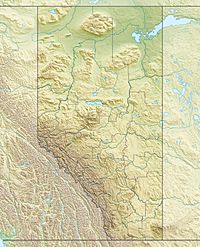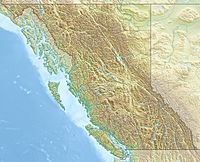Aurora Mountain facts for kids
Quick facts for kids Aurora Mountain |
|
|---|---|
| Highest point | |
| Elevation | 2,797 m (9,177 ft) |
| Prominence | 277 m (909 ft) |
| Geography | |
| Country | Canada |
| Parent range | Blue Range |
| Topo map | NTS 82J/13 |
| Climbing | |
| First ascent | 1916 Interprovincial Boundary Commission |
Aurora Mountain is a mountain located in the Canadian Rockies, a huge mountain range in western Canada. This peak sits right on the border between two Canadian provinces: British Columbia and Alberta. It's also part of a very important natural feature called the Continental Divide.
Contents
About Aurora Mountain
Aurora Mountain is part of the Blue Range, which is a smaller group of mountains within the larger Canadian Rockies. It stands tall at 2,797 meters (about 9,176 feet) above sea level. This makes it one of the higher peaks in its area.
Where is it located?
The mountain is special because it marks the boundary between British Columbia and Alberta. This means if you stood on top of Aurora Mountain, one foot could be in British Columbia and the other in Alberta! It's a natural landmark that helps define where one province ends and another begins.
The Continental Divide
Aurora Mountain is also part of the Continental Divide of the Americas. Imagine a giant line running through North and South America. On one side of this line, all the rain and melted snow eventually flow towards the Pacific Ocean. On the other side, the water flows towards the Atlantic Ocean (or the Arctic Ocean in some northern parts). Aurora Mountain helps form this important natural boundary for water flow.
How Aurora Mountain Got Its Name
Aurora Mountain was named after a ship! It's named after a British Royal Navy ship called the HMS Aurora. This ship was a type of warship known as a light cruiser. Light cruisers were fast ships used for scouting and protecting other ships.
The HMS Aurora was first launched in 1913 for the British Royal Navy. Later, in 1920, this same ship was transferred to the Royal Canadian Navy. This means it became part of Canada's own navy. Naming mountains after important ships was a way to honor them and their service.



